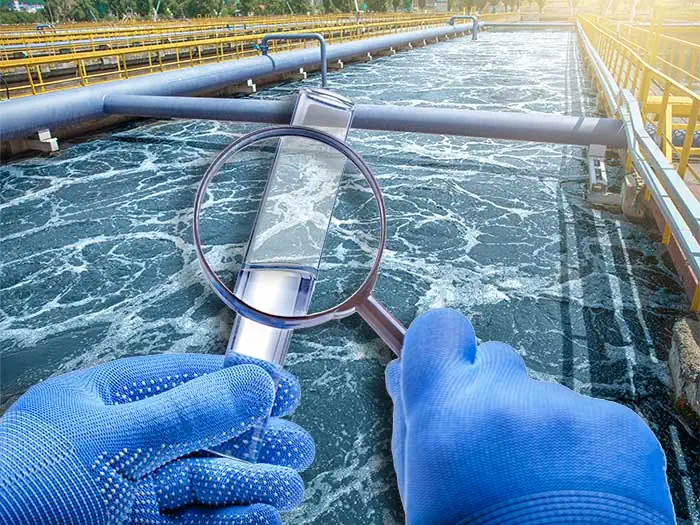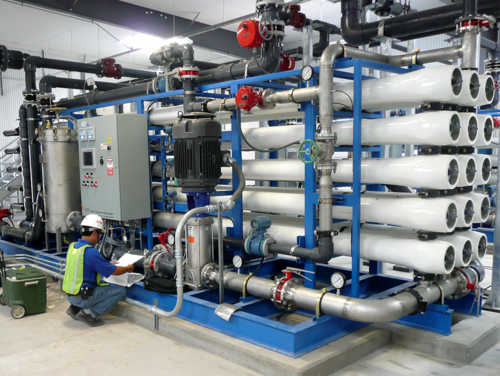PFAS Waste Management for Safer Disposal and Environmental Protection
Advanced Approaches for Effective PFAS Contamination Removal
The relentless obstacle of PFAS contamination demands the expedition of advanced elimination methods that can effectively address these hazardous compounds. Ingenious technologies, such as advanced oxidation processes and numerous adsorption strategies, have actually arised as appealing services in mitigating PFAS from influenced environments.
Understanding PFAS Features
Although per- and polyfluoroalkyl materials (PFAS) have actually been extensively made use of in numerous commercial and customer items because of their special homes, their persistence in the atmosphere positions considerable challenges to public health and safety and security. PFAS are a team of artificial chemicals characterized by a carbon-fluorine bond, among the greatest chemical bonds recognized, which adds to their remarkable stability and resistance to degradation. This security enables PFAS to accumulate in the setting and living organisms, bring about prospective damaging health and wellness results.
These same residential properties add to their ecological perseverance, as PFAS do not conveniently damage down with all-natural procedures. Recognizing the chemical properties of PFAS is important for developing efficient methods to handle and alleviate their ecological influence.
Cutting-edge Removal Technologies
The determination of PFAS in the atmosphere has spurred the growth of cutting-edge removal innovations targeted at efficiently removing these impurities from influenced ecological communities. Amongst the most promising approaches are innovative oxidation procedures (AOPs), which use powerful oxidants to break down PFAS compounds into much less unsafe materials. AOPs can be customized to target particular PFAS structures, boosting their efficiency.
One more emerging technology is the use of adsorption media, such as turned on carbon and ion exchange resins, which can selectively record PFAS from infected water. These materials have actually revealed substantial elimination performances, although regular substitute and regeneration are necessary to maintain performance.
Membrane layer filtration techniques, including reverse osmosis and nanofiltration, are additionally obtaining grip in PFAS removal. These techniques can efficiently separate PFAS from water, offering a practical remedy for treating polluted sources. In addition, thermal treatment methods, such as incineration, can decompose PFAS into safe results, though they require cautious administration to regulate emissions.
Jointly, these innovative remediation modern technologies represent considerable advancements in the continuous fight versus PFAS contamination, offering different approaches to restore afflicted settings and protect public health and wellness.

Bioremediation Techniques
Bioremediation strategies provide a promising strategy to attending to PFAS contamination by harnessing the all-natural capabilities of microbes to deteriorate these persistent compounds (m270 waste management). This method entails making use of microorganisms, fungi, and various other microorganisms that can metabolize or transform PFAS materials right into less damaging byproducts
Current developments in molecular biology and environmental microbiology have boosted our understanding of microbial areas and their prospective duties in PFAS deterioration. Researchers are actively exploring specific webpage stress of microorganisms, such as Pseudomonas and Bacillus, which have actually demonstrated the use this link capacity to damage down specific PFAS compounds.
Sitting bioremediation methods, where microbes are stimulated straight in polluted settings, can be especially effective. This technique typically involves the application of nutrients or electron benefactors to promote microbial development and activity. Furthermore, ex situ methods, such as bioreactors, permit for controlled problems that can enhance degradation prices.
Despite the pledge of bioremediation, obstacles continue to be, including the complicated nature of PFAS compounds and the requirement for comprehensive area screening - m270 waste management. Proceeded r & d will certainly be critical to refine these methods and evaluate their performance in varied environmental contexts
Adsorption and Purification Approaches
Addressing PFAS contamination usually involves employing adsorption and purification methods, which are developed to remove these relentless chemicals from water and soil. Amongst the numerous methods, turned on carbon adsorption is widely utilized due to its high surface area and porosity, allowing effective trapping of PFAS particles. Granular turned on carbon (GAC) systems are specifically preferred for treating large quantities of infected water, while powdered triggered carbon (SPECIAL-INTEREST GROUP) can be utilized for smaller-scale applications.
Ion exchange resins also show assurance in PFAS elimination, working by exchanging PFAS ions with less harmful ions in the water. This method has actually demonstrated efficiency in focusing PFAS substances, facilitating their subsequent removal. In addition, membrane filtration strategies, such as reverse osmosis and nanofiltration, run by utilizing semi-permeable membranes to different PFAS from water, successfully lowering their focus.
While these techniques work, they must be meticulously picked based upon the certain PFAS substances existing and the ecological context. Continual innovations in materials scientific research and engineering are leading to the development of unique adsorbents and purification systems that boost elimination efficiencies and lower functional costs, therefore boosting overall removal efforts.
Regulatory and Plan Considerations
Just how can reliable regulative frameworks boost the administration of PFAS contamination? Comprehensive plans are necessary to make certain a worked with and durable response to the challenges posed by per- and polyfluoroalkyl materials (PFAS) Laws can establish clear visit the site guidelines for surveillance, reporting, and remediating PFAS-contaminated sites, cultivating accountability amongst industries and public entities. (m270 waste management)

On top of that, financial motivations and grants can be integrated into plans to urge the fostering of innovative removal modern technologies. Policymakers ought to also focus on research study and development, making sure that arising methods for PFAS removal are validated and carried out properly.
Furthermore, public awareness and engagement are vital parts of any kind of governing strategy, empowering communities to advocate for their health and wellness. Ultimately, a well-structured regulatory environment will not only enhance the management of PFAS contamination but also promote sustainable techniques that shield future generations.
Verdict
In summary, the complexity of PFAS contamination requires the adoption of advanced remediation approaches. Proceeded research study and advancement in this field remain critical to resolving the obstacles posed by PFAS contamination.